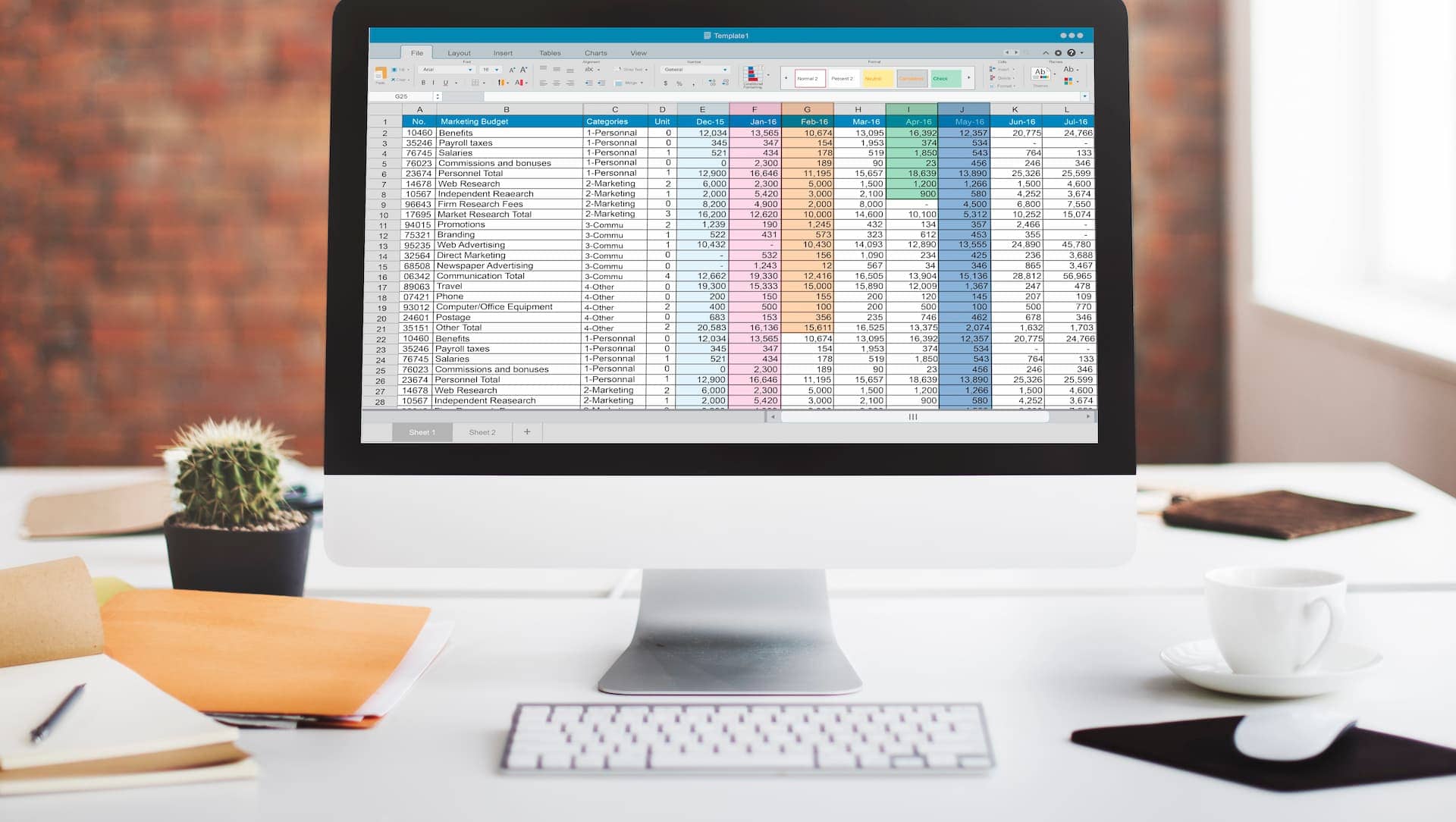What is Gross Potential Rent and Why It Matters for Multifamily Investors
Gross Potential Rent (GPR) represents the maximum rental income a multifamily property could generate if every unit were occupied at current market rates for an entire year. As the foundation of all property financial analysis, GPR serves as the critical baseline metric that investors, lenders, and property managers use to evaluate performance, set budgets, and make strategic decisions.
For multifamily investors and developers, understanding GPR isn’t just about knowing a number, it’s about comprehending the full income potential of your asset and how effectively your property management team is capturing that potential.
How to Calculate Gross Potential Rent: Industry Standard Methodology
Annual GPR Calculation Method
The industry standard approach, aligned with National Apartment Association (NAA) and Institute of Real Estate Management (IREM) methodologies, calculates GPR as the sum of all 12 months from your annual budget, not simply a monthly amount multiplied by 12.
This distinction matters because multifamily properties experience dynamic changes throughout the year:
- Scheduled rent increases during lease terms.
- Market rent adjustments for lease renewals.
- New lease rates for vacant units being leased.
- Seasonal market variations affecting rental rates.
By calculating month-by-month, you account for the reality that Unit 204’s rent might be $1,200 in January but $1,250 after a lease renewal in July. Multiplying a single month by 12 would miss these important variations and understate or overstate your true potential.
Monthly GPR Presentation Best Practices
While there are no official regulatory standards mandating specific GPR presentation methods, industry consensus, supported by major software platforms like Yardi, RealPage, and MRI, strongly favors this approach:
Calculate annual GPR first (sum of all 12 months), then divide by 12 for monthly presentation.
This method provides consistency and stability for budgeting while eliminating volatility from month-to-month market fluctuations. It aligns with how sophisticated investors and commercial lenders expect to see rental income potential presented in financial packages.
GPR as the Universal Baseline: Understanding the 100% Metric
In multifamily financial analysis, GPR functions as the universal baseline, your 100% mark, against which all other performance metrics are measured. Both NAA and IREM standards consistently use GPR as the denominator for calculating key performance indicators:
Critical Performance Ratios Based on GPR
Economic Loss Metrics:
- Vacancy loss as percentage of GPR.
- Credit loss as percentage of GPR.
- Concessions as percentage of GPR.
- Combined economic occupancy rate.
Operational Efficiency Metrics:
- Operating expenses benchmarked against GPR.
- Net Operating Income (NOI) as percentage of GPR.
- Expense ratios for property comparisons.
Revenue Optimization Tracking:
- Actual rental income versus GPR potential.
- Rent growth achievement rates.
- Market positioning effectiveness.
This standardization enables meaningful property-to-property comparisons and year-over-year performance analysis. When you see that Property A has a vacancy loss of 5% of GPR while Property B shows 8%, you immediately understand the relative efficiency regardless of property size or market.
From GPR to Net Operating Income: The Investor’s Cash Flow Cascade
Understanding how GPR flows through to NOI is essential for multifamily investment analysis. Property management companies present GPR to investors and lenders as the starting point of this comprehensive cash flow cascade:
Standard Pro Forma Structure
- Gross Potential Rent (GPR): 100% occupancy at market rates.
- Less: Vacancy & Credit Loss: Typically 3-10% depending on property type, market, and management effectiveness.
- Effective Gross Income (EGI): GPR minus vacancy and credit losses (your realistic income expectation).
- Less: Operating Expenses: Property-specific costs including payroll, maintenance, utilities, management fees, insurance, and taxes.
- Net Operating Income (NOI): The critical metric for property valuation and loan underwriting.
What Lenders Look For
Commercial lenders don’t just accept GPR at face value. Fannie Mae guidelines, for example, specify that rental income calculations must apply conservative adjustments, often multiplying gross monthly rent by 75% to account for vacancy and maintenance factors.
When presenting to lenders or investors, comprehensive documentation is essential:
- Current rent roll with lease expiration dates.
- Market rent analysis and comparable property data.
- Trailing Twelve Months (T12) financial performance.
- Historical occupancy trends.
- Detailed operating expense breakdown.
- Capital expenditure requirements.
Property Management Software and GPR Standardization
The widespread adoption of major property management platforms has created de facto industry standards for GPR reporting. Approximately 85% of professional property managers use systems that implement consistent methodologies:
Platform Implementation Standards
RealPage, Yardi, and MRI all approach GPR calculation similarly:
- Monthly GPR calculated from annualized potential (annual ÷ 12).
- Market rent determinations based on real-time comparable property analysis.
- Variance analysis comparing actual performance to GPR projections.
- Integration with budgeting modules ensuring consistency across all financial reports.
- Automated rent optimization recommendations based on market data.
At Next Level Property Management, we leverage AppFolio to maintain rigorous GPR tracking and reporting. Our system setup ensures that market rent assumptions are documented, updated regularly based on market analysis, and integrated into comprehensive monthly financial packages for our owners.
Common GPR Calculation Mistakes to Avoid
Even experienced property managers can fall into these common GPR pitfalls:
Mistake 1: Using First Month Rates Only
Calculating GPR by taking first-month market rates and multiplying by 12 months creates significant inaccuracy. This approach fails to account for mid-year lease renewals, scheduled rent increases, and market adjustments throughout the year.
Mistake 2: Confusing GPR with Budgeted Revenue
GPR assumes 100% occupancy at market rates. Your budgeted rental revenue should be lower, accounting for realistic vacancy expectations, credit losses, and concessions. Treating GPR as your revenue target sets unrealistic expectations.
Mistake 3: Inconsistent Market Rent Assumptions
Market rents should be updated regularly based on comprehensive market analysis, not arbitrary adjustments. Your GPR is only as accurate as your market rent assumptions, which should be supported by:
- Comparable property rent surveys.
- Recent lease transaction data.
- Market trend analysis.
- Unit-specific amenity adjustments.
- Seasonal market factors.
Mistake 4: Ignoring Other Income Sources
While rental income forms the core of GPR, comprehensive gross potential should also account for other income sources at full potential: parking, storage, pet fees, utilities reimbursement, amenity fees, and other ancillary revenue streams.
GPR in Budget Development and Performance Analysis
Creating Annual Operating Budgets
When Next Level Property Management develops annual operating budgets for our multifamily properties, GPR serves as the critical foundation:
- Establish Market Rents – Comprehensive market analysis for each unit type.
- Calculate Monthly GPR – Account for scheduled increases and market adjustments month-by-month.
- Sum Annual GPR – Total of all 12 months establishes the baseline.
- Apply Vacancy Factor – Realistic occupancy projections based on historical performance and market conditions.
- Calculate Effective Gross Income – Foundation for expense budgeting and NOI projections.
Monthly Variance Analysis
Throughout the year, we compare actual performance against GPR to identify opportunities and challenges:
- Positive variances might indicate successful rent optimization or lower-than-expected vacancy.
- Negative variances signal the need to investigate leasing effectiveness, pricing strategy, or retention issues.
- Trend analysis over consecutive months reveals whether issues are temporary or systemic.
This ongoing analysis enables proactive property management rather than reactive crisis management.
GPR for Development and Acquisition Analysis
For multifamily developers and investors evaluating new opportunities, GPR plays a crucial role in feasibility analysis and valuation:
Development Pro Formas
During the development phase, projected GPR helps determine:
- Optimal unit mix – Which combination of unit types maximizes rental income potential.
- Amenity investment decisions – Whether premium amenities justify higher market rents.
- Pricing strategy – Competitive positioning versus comparable properties.
- Lease-up projections – Timeline to achieve stabilized occupancy and income.
Acquisition Underwriting
When evaluating acquisition opportunities, sophisticated investors analyze:
- Current GPR versus market potential – Is the property underperforming due to poor management or deferred maintenance?
- Rent growth trajectory – What is the realistic GPR growth rate over the hold period?
- Value-add opportunity assessment – Can renovations or improved management increase GPR significantly?
- Market rent verification – Are seller’s GPR assumptions realistic or inflated?
The difference between the seller’s stated GPR and your independent market analysis can reveal significant value-add opportunities or overpricing red flags.
Industry Certification Standards and GPR Knowledge
Professional property management certifications from IREM emphasize GPR competency:
CPM (Certified Property Manager) Designation
The CPM designation requires demonstrated knowledge of GPR-based financial reporting, including:
- Standard budget formats with GPR as the starting point.
- Performance benchmarking using GPR-based ratios.
- Financial analysis and reporting to owners and investors.
- Revenue optimization strategies to maximize GPR achievement.
Income/Expense IQ Benchmarking
The Income/Expense IQ platform, a joint initiative of NAA, IREM, and BOMA, demonstrates industry consensus on GPR usage for benchmarking across markets, property types, and management companies. This standardization enables meaningful comparisons and best practice identification.
Next Level Property Management’s Approach to GPR Analysis
At Next Level Property Management, we implement rigorous GPR tracking and analysis as part of our comprehensive multifamily management services:
Monthly Financial Reporting
Every monthly financial package includes:
- Current GPR calculations based on updated market rent analysis.
- Variance analysis comparing actual rental income to GPR potential.
- Economic occupancy metrics showing vacancy and credit loss as percentage of GPR.
- Trend analysis tracking GPR achievement over time.
- Market positioning assessment relative to comparable properties.
Revenue Optimization Focus
We don’t just calculate GPR, we actively work to maximize GPR achievement through:
- Regular market rent analysis and competitive positioning.
- Strategic pricing for renewals and new leases.
- Resident retention programs reducing vacancy loss.
- Ancillary income optimization.
- Effective collections minimizing credit loss.
Transparent Owner Communication
We believe multifamily investors deserve clear, comprehensive financial reporting that tells the complete story of property performance. Our GPR analysis provides context for all revenue decisions and helps owners understand both achievements and opportunities.
Key Takeaways for Multifamily Investors
Understanding GPR is fundamental to effective multifamily investment and property management:
- Calculate annual GPR as the sum of all 12 budget months, accounting for rent increases, renewals, and market adjustments throughout the year.
- Present monthly GPR as the annual amount divided by 12 for consistency and stability in financial reporting.
- Maintain GPR as your baseline (100%) for calculating all financial performance ratios and metrics.
- Document market rent assumptions and methodology to ensure transparency and credibility with investors and lenders.
- Present GPR within comprehensive cash flow context showing the full cascade from GPR through vacancy loss to Effective Gross Income and NOI.
- Update market rent assumptions regularly based on rigorous competitive analysis and market data.
- Use GPR for performance benchmarking but recognize that maximizing GPR achievement, not just calculating it, drives investment returns.
Partner with Next Level Property Management
Understanding GPR is just the beginning. Maximizing your multifamily property’s income potential requires expertise, market knowledge, and proactive management.
Next Level Property Management brings comprehensive accounting practices, advanced financial analysis, and revenue optimization strategies to every community we manage. Our team leverages industry-standard methodologies, cutting-edge technology, and deep local market expertise to help multifamily investors achieve their financial goals.
Contact Next Level Property Management:
- Phone: (775) 502-8287
- Email: billing@nextlevelpm.co
- License: B.1000986.LLC
Let us show you how professional property management can transform your property’s GPR from a theoretical calculation into achieved income and investment returns.


